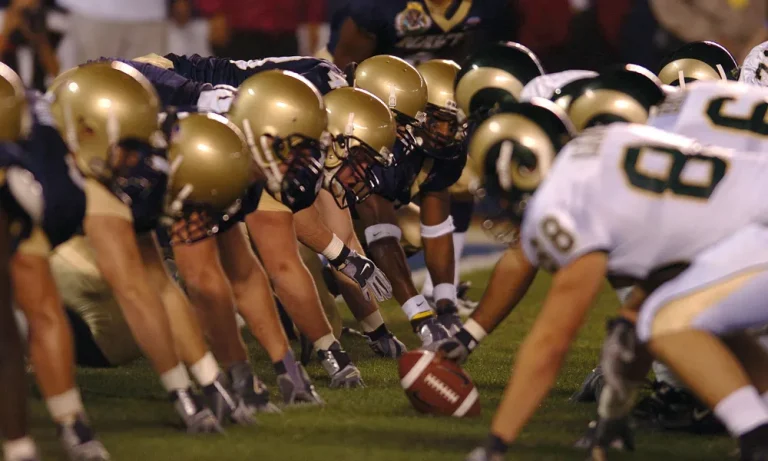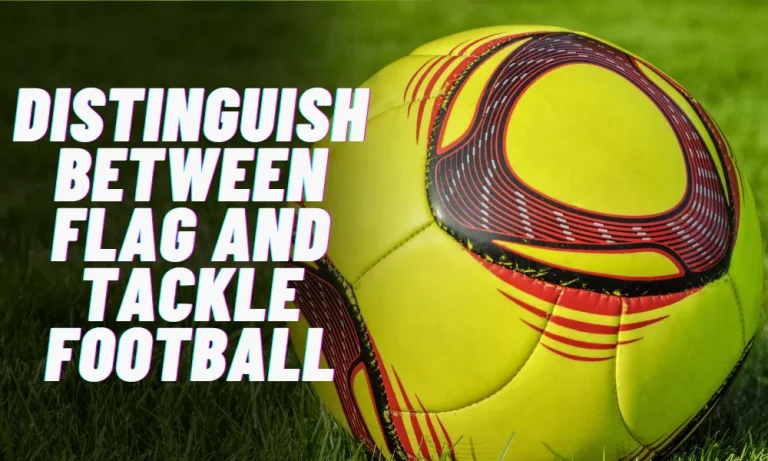What is a drive in football?
Have you ever wondered what exactly a drive means in football? Well, let me break it down for you. In simple terms, a drive is when the offensive team gets their chance to score points. It’s like taking control of the game and reaching the end zone.
As an avid football fan, I’ve witnessed countless exciting drives that have decided the outcome of games. So, let’s dive into this concept together and explore how drives work in football!
Explanation of downs and yards to gain for first downs
When an offensive team starts its drive, it faces the challenge of progressing down the field toward the opponent’s end zone. To understand how this progression occurs, it’s important to grasp the concept of “downs” and the yards needed for a first down.
Downs and Yards to Gain
In football, a series of plays is divided into four downs. The offense has four attempts (or downs) to advance at least 10 yards toward their opponent’s end zone. Each time they successfully move forward by 10 or more yards, they earn another set of four downs.
If the offense fails to gain these required 10 yards within their allotted four downs, possession of the ball is relinquished to the opposing team.
Strategies for Advancing Downfield Effectively
Advancing downfield effectively requires careful planning and execution. Here are some strategies commonly employed:
- Varied Play Calling: Mixing up play types such as passes, runs, and trick plays keeps defenses guessing and helps gain yardage.
- Exploiting Gaps: Analyzing defensive formations allows offenses to identify gaps in coverage or weak spots that can be exploited with well-designed plays.
- Blocking Techniques: Solid blocking by offensive linemen creates running lanes or provides quarterbacks enough time in passing situations.
- Yards after Catch: In passing situations, receivers aim for additional yardage after catching the ball by evading defenders or making quick moves.
Role of quarterback, coaches, and play calling during a drive
When it comes to executing a successful drive in football, the role of the quarterback, coaches, and strategic play calling cannot be understated. Let’s dive into this crucial aspect of the game.
The Quarterback’s Role
The quarterback acts as the leader on offense during a drive. They receive instructions from coaches or offensive coordinators and communicate them to the rest of the team. The quarterback is responsible for making split-second decisions based on defensive alignments, delivering accurate passes, or managing running plays effectively.
Coaches’ Influence
Coaches play an integral role in designing effective strategies for each drive. They analyze opponents’ defenses, identify weaknesses to exploit, and develop game plans accordingly. Coaches work closely with quarterbacks to ensure everyone understands their roles within specific plays.
Strategic Play Calling
Play calling involves selecting specific offensive plays designed to gain yards efficiently against various defensive schemes. Some common types of plays include:
- Passing Plays: These involve the quarterback throwing forward passes to receivers downfield.
- Running Plays: Designed for running backs who carry or receive handoffs from quarterbacks.
- Trick Plays: Unconventional plays used strategically to surprise defenses.
- Screen Passes Quick throws made by quarterbacks toward eligible receivers positioned near the line of scrimmage.
- Play Action Passes: Designed to deceive defenders by simulating a run before passing.
Importance of time management during a drive
Time management is a critical factor that can greatly influence the outcome of a drive in football. Let’s explore why it matters and the strategies teams employ to maximize clock control.
Importance of Time Management
During a drive, managing the clock effectively becomes crucial for offensive teams. The goal is to score and use up as much time as possible, leaving less opportunity for the opposing team to mount their own comeback or regain possession.
Teams employ various strategies to manage time efficiently during drives:
- Hurry-Up Offense: This tactic involves running plays quickly without huddling between each play, allowing more plays within a given timeframe.
- Running Plays: Employing running plays helps run down the game clock continuously since these often keep the ball on the ground and minimize stoppages.
- Passing with In-Bounds Targets: When passing is necessary, quarterbacks aim at completing throws towards receivers who stay in bounds after making catches—keeping the clock ticking while gaining yardage.
- Using Timeouts Wisely: Coaches strategically call timeouts when necessary to regroup or preserve valuable seconds when under pressure.
frequently asked questions
1. Can multiple scoring opportunities occur within one drive?
Yes, it is possible for an offense to have multiple scoring opportunities within one extended drive. They may not succeed initially but earn subsequent chances due to penalties or turnovers by either team.
2. How do turnovers affect overall game dynamics?
Turnovers play a significant role in altering game dynamics as they give opposing teams new opportunities with favorable field positions. They can swing momentum and lead to shifts in control over the game’s outcome.
3. Are there any exceptions when drives don’t necessarily conclude with scores, turnovers, or punts?
In rare instances such as time expiring at halftime or at the end of regulation without reaching another conclusion-scenario mentioned above (score/turnover/punt), drives may come to an abrupt halt without any specific event concluding them.
Conclusion
In conclusion, a drive in football is like embarking on an exciting journey toward scoring points. As I’ve witnessed many thrilling drives unfold, I’ve come to appreciate the strategic play calling, execution, and time management involved.
Understanding the downs, yards to gain for first downs, and various scenarios that can conclude a drive adds depth to the game. So, next time you watch a football match, keep an eye out for those thrilling drives that can change the course of the game!





